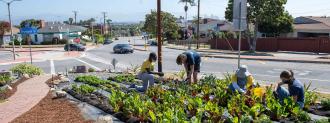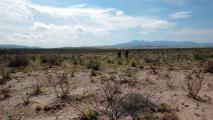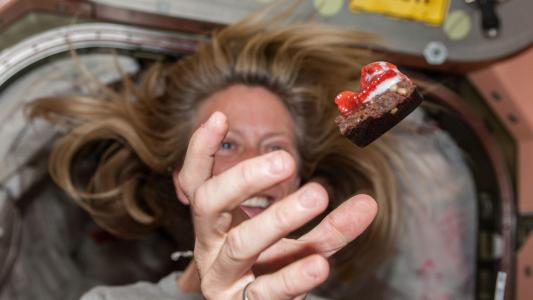Since 2018, California startup Crop Swap LA has planted and maintained gardens in homeowners’ front yards, cutting them in on the profits made by selling the crops locally.
Now, it’s taking the model to the next level: food deserts.
The beginnings: When LA resident Jamiah Hargins’ vegetable garden started producing more food than his family could eat, he began trading his crops for ones grown by his neighbors.
He then wondered if there was a way to implement the trading on a larger scale — and that’s how Crop Swap LA was born.
The model: Since 2018, the startup has been working with local gardeners to grow and share fresh produce. It installs new gardens and trains people in everything from plant science to rainwater harvesting.
People living near the gardens can pay $36 per month for 3 pounds worth of produce from them. For an additional $7, Crop Swap will deliver the greens and veggies right to their homes. Homeowners get a cut of the profits for providing the land for the garden.
“My company partners with homeowners who have a front yard and want to do something positive,” Hargins told Fast Company. “We maintain it, but they get part of the income every month.”
It’s OK to leave behind ideas like the grocery system.
Jamiah Hargins
The microfarm: In April, Crop Swap LA opened the Asante Microfarm in front of a home in the View Park neighborhood in South LA.
The microfarm features more than 600 plants, and thanks to the startup’s water recycling system, very little water is needed to grow them — a huge consideration in drought-prone Southern California.
“We’re only using 8% of the water that was previously used to grow grass there, but now to grow food,” Hargins said. “I think about 700 gallons per day were needed to keep that grass healthy. It’s amazing how much it is when you really count it.”
Hyper-local produce: View Park is considered a “food desert” due to its lack of places to buy affordable, high-quality food. Now, people living within two miles of the Asante Microfarm can subscribe for a monthly delivery of fresh produce.
Crop Swap is also donating 10% of the food harvested from the microfarm to a local community fridge, helping those who might not be able to afford the subscription get fresh produce.
Looking ahead: The View Park microfarm is Crop Swap’s first, but Hargins hopes to one day have one planted every two square miles in LA.
“It’s OK to leave behind ideas like the grocery system,” he said at the microfarm’s opening event, according to food journalist Mary MacVean. “Nature is showing us we can create our own food.”
We’d love to hear from you! If you have a comment about this article or if you have a tip for a future Freethink story, please email us at [email protected].






